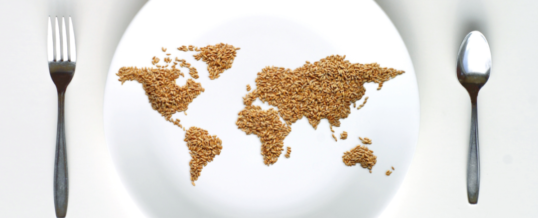
ROME, ITALY — World hunger dramatically worsened in 2020, mostly related to fallout of COVID-19, the United Nations said.
One-tenth of the global population – up to 811 million people – were undernourished last year, according to a multi-agency report, The State of Food Security and Nutrition in the World.
“Unfortunately, the pandemic continues to expose weaknesses in our food systems, which threaten the lives and livelihoods of people around the world,” the heads of the five UN agencies write in this year’s Foreword.
The report is jointly published by the Food and Agriculture Organization of the United Nations (FAO), the International Fund for Agricultural Development (IFAD), the United Nations Children’s Fund (UNICEF), the UN World Food Programme (WFP) and the World Health Organization (WHO).
“This year offers a unique opportunity for advancing food security and nutrition through transforming food systems with the upcoming UN Food Systems Summit, the Nutrition for Growth Summit and the COP26 on climate change. The outcome of these events will go on to shape the […] second half of the UN Decade of Action on Nutrition.”
Disturbingly, in 2020 hunger shot up in both absolute and proportional terms, outpacing population growth: some 9.9% of all people are estimated to have been undernourished last year, up from 8.4% in 2019.
More than half of all undernourished people (418 million) live in Asia; more than a third (282 million) in Africa; and a smaller proportion (60 million) in Latin America and the Caribbean. But the sharpest rise in hunger was in Africa, where the estimated prevalence of undernourishment – at 21% of the population – is more than double that of any other region.
On other measurements, too, the year 2020 was somber. Overall, more than 2.3 billion people (or 30% of the global population) lacked year-round access to adequate food: this indicator – known as the prevalence of moderate or severe food insecurity – leapt in one year as much in as the preceding five combined. Gender inequality deepened: for every 10 food-insecure men, there were 11 food-insecure women in 2020 (up from 10.6 in 2019).
Malnutrition persisted in all its forms, with children paying a high price: in 2020, over 149 million under-fives were estimated to have been stunted, or too short for their age; more than 45 million were wasted, or too thin for their height; and nearly 39 million were overweight. A full 3 billion adults and children remained locked out of healthy diets, largely due to excessive costs. Nearly a third of women of reproductive age suffer from anemia. Globally, despite progress in some areas – more infants, for example, are being fed exclusively on breast milk – the world is not on track to achieve targets for any nutrition indicators by 2030.
In many parts of the world, the pandemic has triggered brutal recessions and jeopardized access to food. Yet, even before the pandemic, hunger was spreading; progress on malnutrition lagged. This was all the more so in nations affected by conflict, climate extremes or other economic downturns, or battling high inequality – all of which the report identifies as major drivers of food insecurity, which in turn interact.
On current trends, The State of Food Security and Nutrition in the World estimates that Sustainable Development Goal 2 (Zero Hunger by 2030) will be missed by a margin of nearly 660 million people. Of these 660 million, some 30 million may be linked to the pandemic’s lasting effects.
As outlined in last year’s report, transforming food systems is essential to achieve food security, improve nutrition and put healthy diets within reach of all. This year’s edition goes further to outline six “transformation pathways.” These, the authors say, rely on a “coherent set of policy and investment portfolios” to counteract the hunger and malnutrition drivers.
Depending on the particular driver (or combination of drivers) confronting each country, the report urges policymakers to:
- Integrate humanitarian, development and peacebuilding policies in conflict areas;
- Scale up climate resilience across food systems;
- Strengthen the resilience of the most vulnerable to economic hardship;
- Intervene along supply chains to lower the cost of nutritious foods;
- Tackle poverty and structural inequalities;
- Strengthen food environments and changing consumer behavior
The report also calls for an “enabling environment of governance mechanisms and institutions” to make transformation possible. It enjoins policymakers to consult widely; to empower women and youth; and to expand the availability of data and new technologies. Above all, the authors urge, the world must act now – or watch the drivers of hunger and malnutrition recur with growing intensity in coming years, long after the shock of the pandemic has passed.
Source: World Grain
JUL
2021


About the Author: